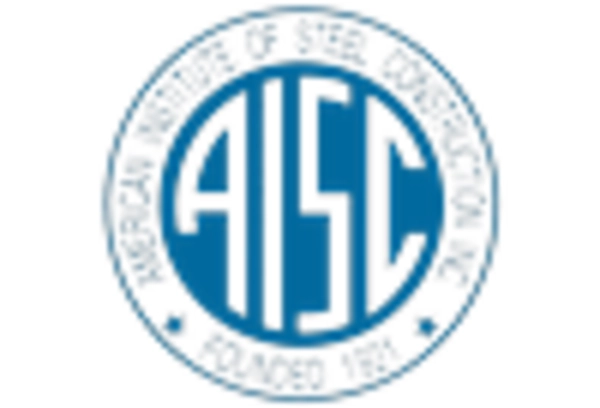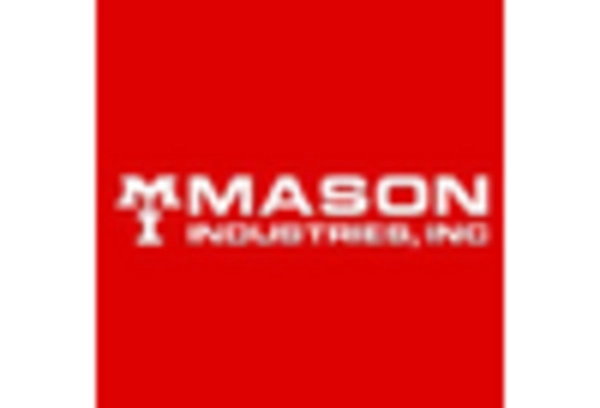Regulatory Compliance
Regulatory frameworks play a crucial role in shaping the Seismic Bracing Market. Governments and local authorities are increasingly implementing stringent building codes and regulations aimed at enhancing structural safety in earthquake-prone regions. These regulations often mandate the incorporation of seismic bracing systems in new constructions and retrofitting existing structures. For instance, the International Building Code (IBC) outlines specific requirements for seismic design, which directly influences market dynamics. As compliance becomes non-negotiable, construction firms are compelled to invest in advanced seismic bracing technologies, thereby driving market growth. The Seismic Bracing Market is likely to expand as adherence to these regulations becomes a priority for builders and developers.
Increasing Urbanization
The rapid pace of urbanization is a key driver for the Seismic Bracing Market. As populations migrate to urban centers, the demand for infrastructure development intensifies. This trend necessitates the construction of high-rise buildings and complex structures, which are particularly vulnerable to seismic activities. Consequently, the need for effective seismic bracing solutions becomes paramount to ensure the safety and resilience of these structures. According to recent data, urban areas are expected to house nearly 68% of the world's population by 2050, further amplifying the urgency for robust seismic bracing systems. The Seismic Bracing Market is thus poised for growth as stakeholders prioritize safety in urban planning and construction.
Technological Innovations
Technological advancements are significantly influencing the Seismic Bracing Market. Innovations in materials and engineering techniques are leading to the development of more effective and efficient seismic bracing solutions. For example, the introduction of smart materials and adaptive bracing systems enhances the ability of structures to withstand seismic forces. Furthermore, the integration of Building Information Modeling (BIM) in design processes allows for better planning and implementation of seismic bracing systems. As these technologies evolve, they not only improve safety but also reduce costs associated with seismic retrofitting. The Seismic Bracing Market is expected to benefit from these innovations, as stakeholders seek to leverage cutting-edge solutions to enhance structural integrity.
Rising Awareness of Seismic Risks
The growing awareness of seismic risks among the public and industry stakeholders is a significant driver for the Seismic Bracing Market. As natural disasters become more frequent and severe, there is an increasing recognition of the need for proactive measures to mitigate risks associated with earthquakes. Educational campaigns and disaster preparedness initiatives are fostering a culture of safety, prompting property owners and developers to invest in seismic bracing solutions. This heightened awareness is reflected in market trends, with a noticeable uptick in demand for seismic retrofitting and new construction projects incorporating advanced bracing systems. The Seismic Bracing Market is likely to see sustained growth as awareness continues to rise.
Investment in Infrastructure Development
Investment in infrastructure development is a pivotal driver for the Seismic Bracing Market. Governments and private entities are allocating substantial resources towards building resilient infrastructure, particularly in regions susceptible to seismic activity. This focus on infrastructure not only aims to enhance safety but also to stimulate economic growth. For instance, initiatives to upgrade transportation networks, schools, and hospitals often include provisions for seismic bracing to ensure these critical facilities can withstand earthquakes. As infrastructure projects proliferate, the demand for seismic bracing solutions is expected to surge. The Seismic Bracing Market stands to gain significantly from this trend, as investments in resilient infrastructure become a priority for policymakers and stakeholders.


















Leave a Comment